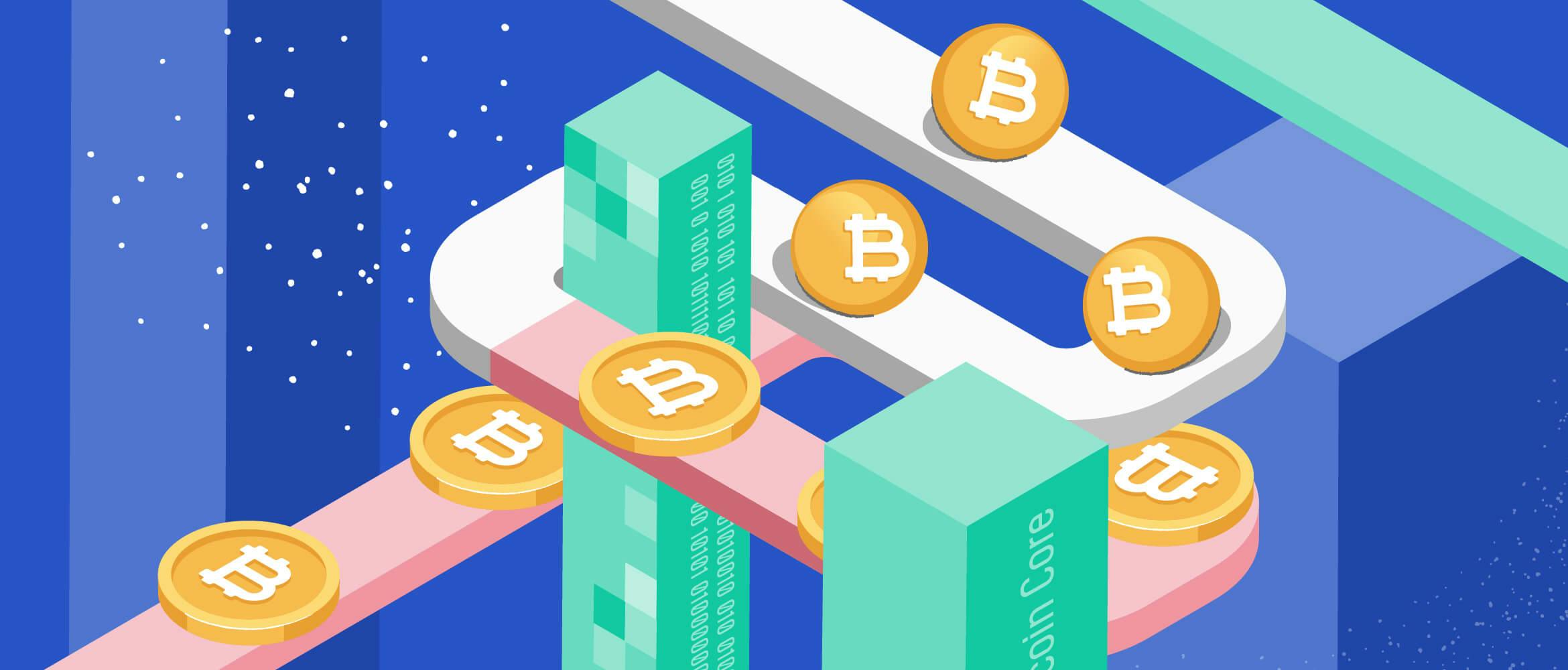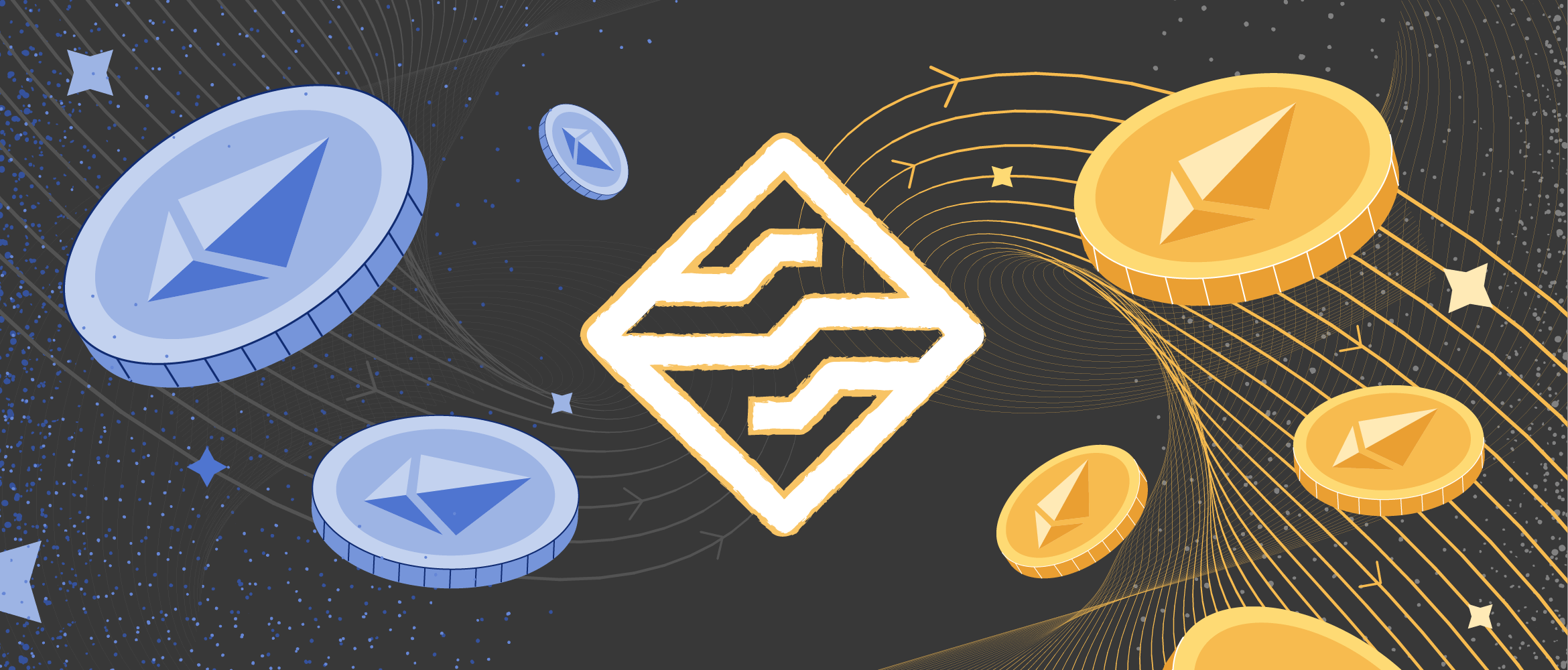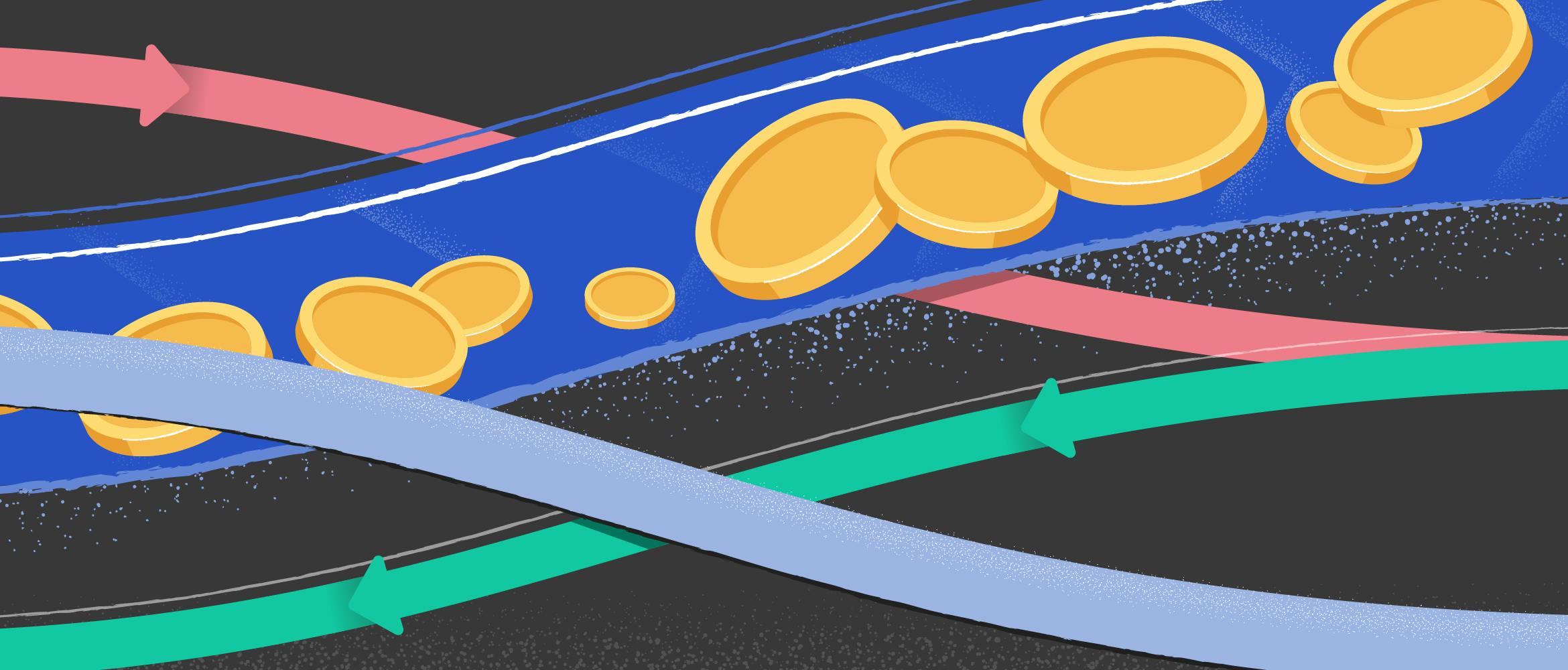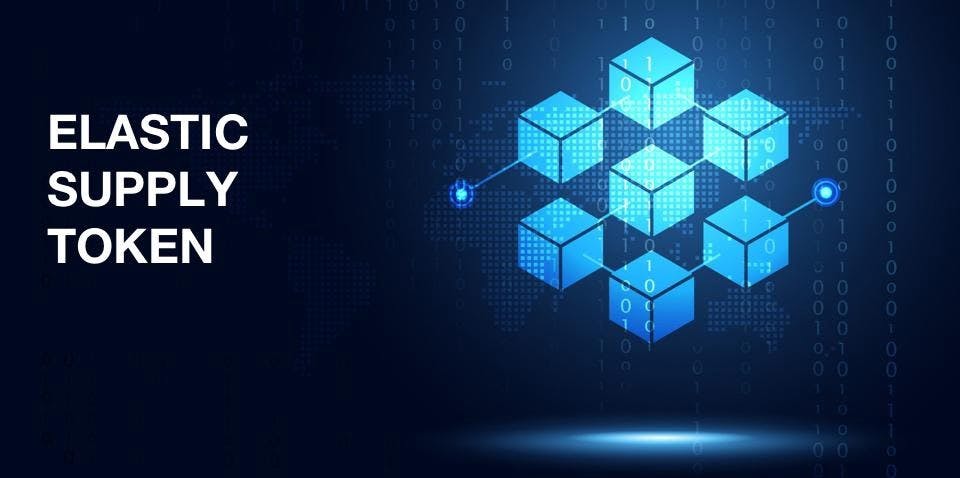
- All
- Tools
- Analytics
- Technical Analysis
- Trading
- Blockchain
- DeFi
- Guides
- Company News
- Educational
- Opinion
- Price Predictions
- Market News
- News
- Trading cases
- Practical guides
- Exchanges
- Trading signals
- Cryptocurrency
- Crypto bots
- Other
Become a crypto master
Learn everything about crypto,
trading and bots

What is Staking?
Start Trading on 3Commas Today
Get full access to all 3Commas trading tools with free trial period

By 2023, the concept of staking has become an integral part of the cryptocurrency landscape. Staking essentially revolves around "securing" a certain amount of cryptocurrency within a blockchain project's wallet. This act aids in transaction validation, bolstering the security, consistency, and forward momentum of the project. In return for their commitment, stakers are rewarded with freshly minted cryptocurrency.
So, what does it mean to stake crypto coins in 2023? It represents a strategic investment in crypto coins to validate transactions on a Proof-of-Stake (PoS) blockchain. The PoS mechanism relies heavily on staking to authenticate transactions, fortifying the network's integrity and ensuring its seamless operation.
For a contemporary analogy, consider the traditional banking system. When customers deposit money in banks, they earn interest as banks utilize these funds to drive their business operations. Similarly, in the crypto realm, staking is akin to depositing coins into a blockchain project. The staked coins enhance the network's resilience, and in recognition of this contribution, stakers receive cryptocurrency, yielding a return on their initial investment.
How Does Staking Work?
Staking works by holding (locking) a native digital asset in the wallet of a Proof-of-State (PoS) blockchain network to support the network's operations. In staking, validators that lock up their digital assets are selected randomly by the protocol to create and approve blocks - verify transactions. Even though how nodes are chosen to validate blocks are random, investors who stake higher amounts are often chosen more frequently.
What is Proof-of-Stake?
Proof-of-Stake (PoS), an alternative to mining, is a consensus algorithm for blockchain platforms based on arbitrary validators among a pool of participants/users who stake the platform's coins by holding them in the wallet. PoS is proven to be an energy-efficient and eco-friendly alternative to Proof-of-Work (PoW), which relies on mining. Examples of cryptocurrencies that use PoS are NEO, Stellar, Algorand, etc.
There are different ways investors are rewarded on blockchains. Every blockchain institutes a consensus protocol that determines how users/miners receive returns. For instance, Bitcoin & Litecoin use Proof-of-Work (PoW) for block mining. PoW is an energy-intensive mining process - it requires high-end computing power, and it consumes a lot of electricity. Considering the energy requirements, expensive hardware, and environmental impact, earning from the Bitcoin blockchain by staking Bitcoin is better than the present PoW consensus algorithm.
Staking Cryptocurrency in 2023: A Step-by-Step Guide
In 2023, with the ever-growing prominence of staking in the cryptocurrency ecosystem, engaging in the process has become more streamlined than ever. To begin staking, follow these steps:
- Cryptocurrency Selection: Identify a cryptocurrency that supports staking.
- Acquisition: Procure the desired amount of coins you intend to stake.
- Wallet Staking: Utilize a dedicated wallet to initiate the staking process. By simply holding onto your coins within this wallet, rewards accrue over time.
It's a symbiotic relationship — while the blockchain leverages your staked coins to authenticate transactions and bolster its infrastructure, you, in turn, are compensated for your commitment. Many contemporary wallets, like the Trust Wallet, facilitate direct staking, making the process even more convenient. Additionally, numerous exchanges in 2023 have expanded their services to offer staking opportunities to their clientele, providing an added avenue for those keen on exploring this investment strategy.
What is the Lockup Period?
Whether you are staking directly or through a third-party service, there is always a lockup period or vesting period. The lockup period is the time during which you can't withdraw your coins. So, before staking your funds in a project, study the terms and conditions properly.
However, it's possible to withdraw your coins before the end of the lockup period via a third-party service provider - more on this below. Be careful when considering this option; it may not work on every staking platform. Always do comprehensive research having "withdrawing through a third-party service" as a backup plan.
Types of Staking
We have different types of staking based on how users choose to participate in staking. They include:
- Group Staking or Joint Staking
- Cold Staking
- Staking Suppliers
Joint Staking
As the name implies, it's a form of staking where participants pool money together. Users choose to stake in a group to increase the possibilities of being chosen as block validators. The goal is to form an investment pool to have higher staking power.
As expected, rewards are shared among the group members. Every participant receives shares according to their contribution. Group staking is an easy way to break into staking. It enables users with little amounts to participate. Such decentralization gives new users or small participants a say in the system.
Staking Suppliers
This form of staking is based on offering a service to cryptocurrency users to stake. Rewards come in the form of commissions charged. The returns fluctuate with respect to the percentage of commissions - typically, it's from 2% - 50%.
Cold Staking
Some blockchains allow users to do cold staking, which involves staking cryptocurrency from a cold wallet. This refers to a hardware wallet that is not constantly connected to the internet. Cold staking enables users to leave their cryptocurrencies offline, which is considered safer. However, this method is best suited to participants with large portfolios for coins. Of course, you know, leaving huge funds online is risky.
What are Staking Services?
There are some technical things to deal with before you can stake your coins on Proof-of-Stake blockchains. There are services that make breaking into staking an absolute breeze. Such services take care of the technical aspect, thereby enabling users to focus on other things.
Initiating staking on some proof of stake projects is difficult and requires a level of technical skill to get started. However, it's good to note that some projects make staking easy with in-built staking features available in their wallets. Other PoS blockchains without a "click to start" button to initiate the process make contracting staking services necessary.
A good example of a staking service is Pool-X, which is a platform built by KuCoin. This platform simplifies everything and makes staking very easy. All you need to do is deposit your coins, stake them and relax while you enjoy the returns. This platform is "more" than a staking service. You can do more with it.
Pool-X offers a service that enables investors to exchange staked tokens for tokens that are not locked. The beauty of this service is that users can withdraw their tokens even when the lockup period has not elapsed. The flexibility is second to none.
Advantages of Staking
Advantages of PoS staking include:
- Less Expensive
- Easier to Start
- Lower Risks
- Predictable Reward
- Eco-Friendly
Staking is Not Expensive
Staking is a simple and effective way to earn rewards from PoS projects. This is unlike the PoW mining process that requires the use of expensive hardware and high energy consumption. The financial requirements of PoW mining make it a costly investment. Even though the machines are expensive, they get easily outdated or faulty, hence the need for replacement.
Easier to Start - Staking is Beginner-Friendly
Beginners find it easy to start making some coins via staking. Think of the PoW. It's capital intensive and takes a lot to begin with - not just money. But this is different in staking. Group staking enables new users and people with low capital to contribute funds for joint staking and get steady rewards even though their funds are small. The presence of third-party staking service providers further establishes that staking is not difficult to break into.
Lower Risks
Staking coins in PoS projects is far less risky than buying equipment and paying high electricity bills to mine coins. What happens if the hardware breaks down or becomes outdated? Who bears the risk of the probability of not getting a significant return on investment? Those are the risks associated with the PoW mechanism. On the flip side, the coins you invest in staking can be withdrawn after the lockup period. The risk of losing funds is significantly lower in staking.
Predictable Returns
Unlike the PoW mechanism, where cryptocurrencies are earned via random processes with low probabilities, the PoS staking gives more predictable returns. The chances of receiving rewards are increased with the decentralized staking model.
Staking is Eco-Friendly
Staking is more environment-friendly and energy-efficient. The crypto world is faced with the responsibility to transit entirely to eco-friendly processes. This was made clear by the recent development in the crypto market. The billionaire crypto enthusiasts, Elon Musk, announced that his company, Tesla, would not accept payment in Bitcoin anymore.
"We are concerned about rapidly increasing use of fossil fuels for Bitcoin mining and transactions, especially coal, which has the worst emissions of any fuel...we intend to use it (Bitcoin) for transactions as soon as mining transitions to more sustainable energy..."
Musk tweeted.
Disadvantages of Staking
Staking is a great way to earn incentive from cryptocurrency projects; however, it's not devoid of downsides:
- Low Returns
- Hacks (Theft)
- Negative Price Movement of Locked Coins
- Vesting/Lockup Period
- Long Returns Duration
Low Returns
Staking platforms and exchanges don't pay highly; hence the earnings are very low compared to the rewards you can get from mining.
Hacks
Leaving funds locked up in online wallets increases the risks of the wallet being hacked. Another part of staking that does not sound good is that by staking coins in a blockchain project (directly or indirectly), you put your funds in the hands of people you don't know. Anything could happen. That's risky!
Negative Price Movement
What happens if the value of your coins crashes while they are still locked? Adverse market movement is one of the factors that make the staking process risky. Investors, therefore, should meticulously select the assets they stake. Choosing assets based on APY is not the best because a negative price movement could cancel any potential gains.
Vesting Period
The lockup periods can be detrimental. Not being able to access staked assets can affect your overall returns since your withdrawal is not possible if the asset's value is dropping. It's advisable to choose platforms without staking periods or look out for third-party services that exchange unlocked coins for locked assets.
Long Returns Duration
Some PoS platforms pay rewards at long intervals. Consequently, investors have to wait to receive their returns. Platforms that payouts frequently are better. With the latter, you can reinvest your rewards and earn more. To avoid having to wait for long before receiving rewards, stake only with platforms that frequently pay - preferably daily.
Some Well Known Proof-of-Stake Projects
Texos
Texos is a multi-purpose blockchain project that is based on the PoS protocol. This cryptocurrency is suitable for investors who can delegate their tokens to a validator for securing the network. As noted earlier, investors earn passive income.
Dash
This platform enables "stakers" to invest via a master node. 1000 DASH is the least precondition to operate a master node.
Neo
Neo is a blockchain project with the vision of creating a blockchain-based smart economy. Neo is an open-source project with another coin called GAS. GAS can be staked within the NEO Proof-of-Stake wallet for returns.
Algorand (ALGO)
You can buy and stake this cryptocurrency on Binance. Binance shows all the basic information you need to know, ranging from returnability (percentage return per year) and the minimum amount you must have to start staking. You can also buy it from other exchange platforms.
TRON (TRX)
This coin is rated as one of the most profitable staking platforms. Binance gives high returnability on TRX per year. Best of all, the minimum investment is affordable - you need at least 5 TRX to begin.
Stellar (XLM)
This is a fast and efficient platform. It's used for the development of DeFi applications. You need a minimum of 10XLM to start staking. From 2%-4% annual returns are feasible.
Note: The crypto world is an ever-evolving industry. Information provided about the PoS platforms above is subject to change.
Staking Wisdom [What You Should Know]
- Do Your Own Research (DYOR)
High-quality research precedes successful investment. Before you set out to invest in any project, do a comprehensive research; make sure you understand the basic rules of staking of a project, ranging from lockup period, percentage return, to associated fees and how to secure the funds in a staking wallet. Checking up the history of staking platforms of interest will save you from grave mistakes.
- Invest in Stable Platforms.
The crypto "cemetery" is full of "dead" blockchain projects. The easiest way to lose your funds is to stake in every cryptocurrency you find out there. Be careful! Don't be carried away by the promise of high returns.
Wrapping Up
Staking is a proven way to earn from blockchain projects. However, like every investment, there are risks involved. Make sure you have an in-depth understanding of how things work before staking your hard-earned funds. Remember, the journey of a successful investment starts with exhaustive research. Good luck!

A proven leader, successful at establishing operational excellence and building high-performance teams with a sharp focus on value creation and customer success.






